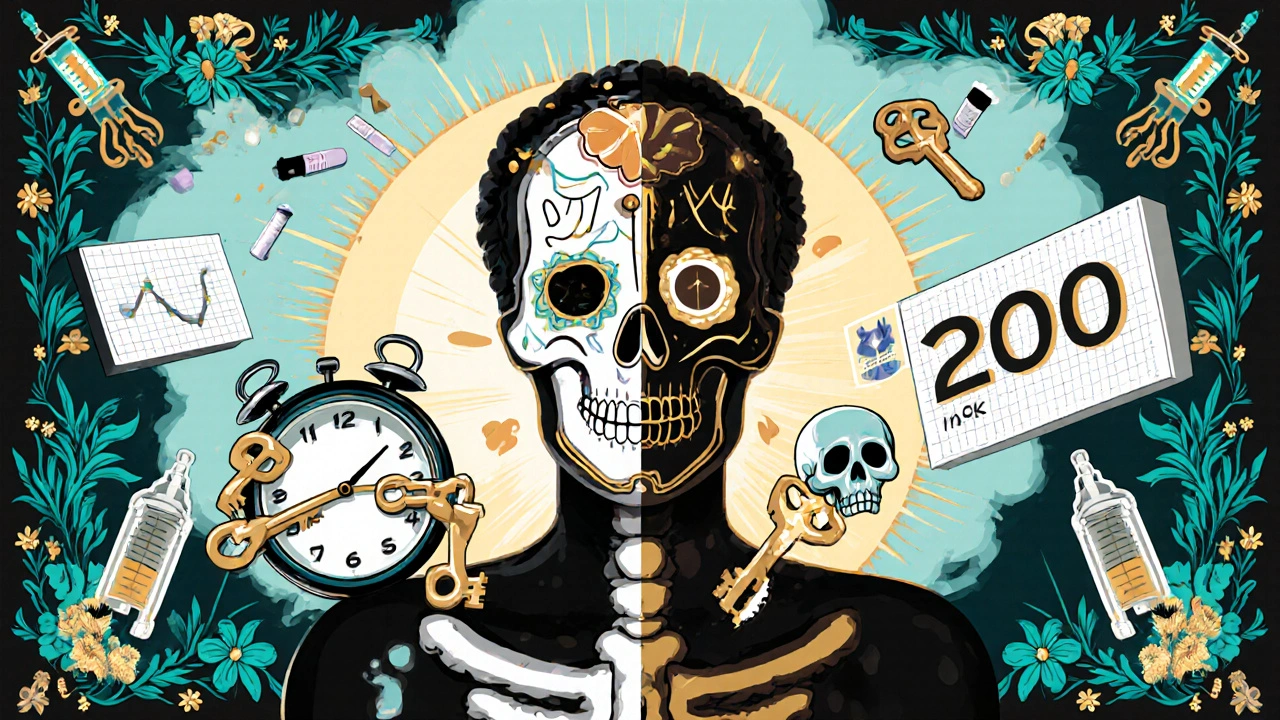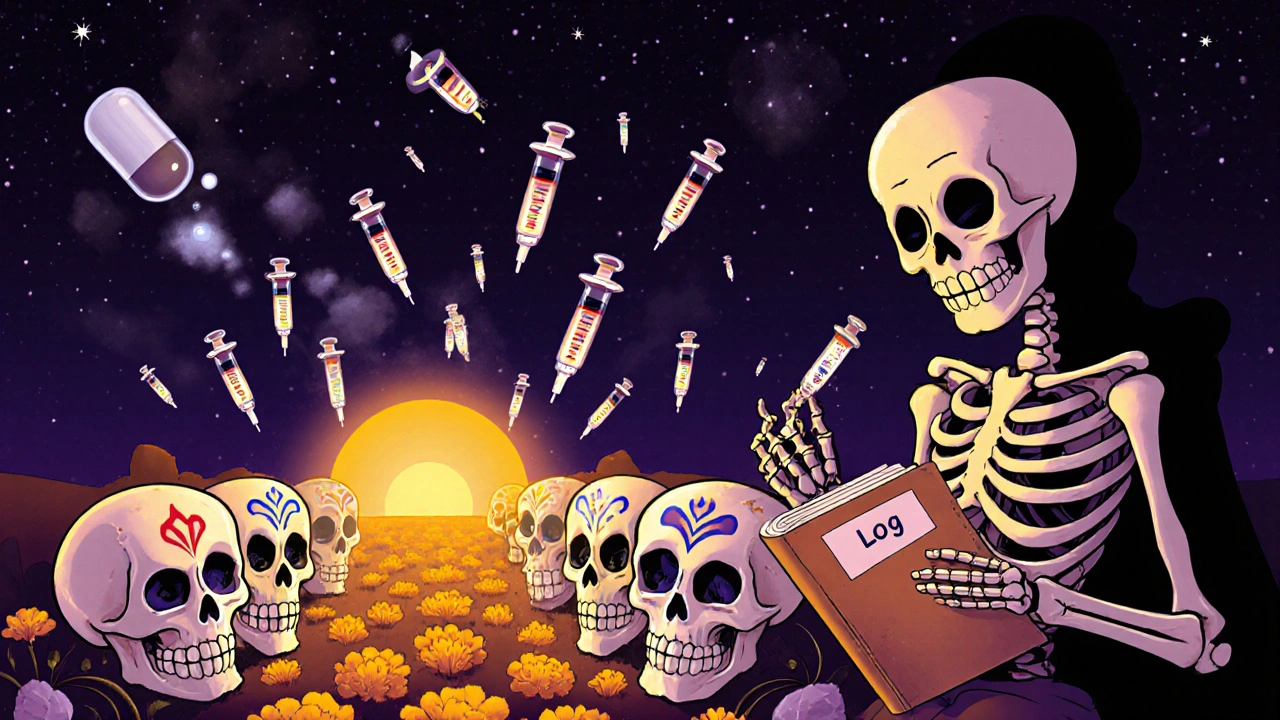Steroid Insulin Adjustment Calculator
Calculate precise insulin adjustments needed for steroid-induced hyperglycemia based on article guidelines. This tool helps determine basal and mealtime insulin adjustments for prednisone, hydrocortisone, and dexamethasone.
Why Steroids Make Blood Sugar Spike in People with Diabetes
When you’re on steroids-whether it’s prednisone, hydrocortisone, or dexamethasone-your blood sugar doesn’t just rise a little. It can go through the roof, even if you’ve had diabetes under control for years. This isn’t a fluke. It’s a direct chemical reaction. Steroids interfere with how your body uses insulin. They make your liver dump more glucose into your bloodstream, block insulin from doing its job in muscles and fat, and even quiet down your pancreas so it makes less insulin. The result? Post-meal blood sugar spikes that feel unpredictable, frustrating, and dangerous.
Studies show that over half of hospitalized patients on high-dose steroids develop high blood sugar. In some cases, it’s so severe that 48% stay above 140 mg/dL all day. And here’s the kicker: if you already have type 2 diabetes, your insulin needs can jump by 30% to 50% just from a moderate steroid dose-like 20 mg of prednisone daily. For people without prior diabetes, it’s common to develop new-onset high blood sugar, called steroid-induced diabetes, during treatment. This isn’t a temporary glitch. It’s a metabolic shift that demands real, active management.
How Steroids Break Down Your Blood Sugar Control
Steroids don’t just raise blood sugar randomly. They attack it from three angles. First, they trigger your liver to churn out more glucose-even when you’re fasting. Second, they make your muscle and fat cells blind to insulin. Think of insulin as a key that unlocks your cells to let glucose in. Steroids bend the key so it doesn’t fit anymore. Third, they suppress your pancreas. Beta cells, the ones that make insulin, get overwhelmed and slow down production. This isn’t just insulin resistance. It’s insulin starvation.
The timing matters too. Most steroids are taken in the morning. That means their peak effect hits 4 to 8 hours later-right around lunchtime. That’s why your blood sugar often spikes hardest after breakfast and lunch, not dinner. Many people check fasting glucose and think they’re fine. But that’s misleading. Fasting numbers can look normal while post-meal levels soar past 200 mg/dL. That’s why checking glucose 2 hours after meals is non-negotiable during steroid therapy.
Some steroids last longer than others. Hydrocortisone wears off in 8 to 12 hours. Prednisone lasts about 18 to 24. Dexamethasone? It sticks around for 36 to 72 hours. That means your insulin needs change based on the drug you’re on. A short-acting steroid needs more frequent insulin tweaks. A long-acting one might need steady, sustained adjustments.
Who’s Most at Risk for Steroid-Induced Hyperglycemia
Not everyone on steroids gets wild blood sugar swings. But some people are far more likely to. If you already have type 2 diabetes, your risk jumps dramatically. The same goes if you’re over 65, have a BMI over 30, or have a family history of diabetes. Even if you’ve never been diagnosed, if your fasting glucose was ever between 100 and 125 mg/dL (prediabetes), you’re in the danger zone.
Other hidden risks include low magnesium levels. For every 0.1 mg/dL drop in magnesium, your chance of hyperglycemia goes up by 10% to 15%. That’s why many endocrinologists check magnesium when steroids start. Chronic hepatitis C also doubles your risk. And if you’re on transplant meds like tacrolimus or cyclosporine? That’s a double whammy. These drugs block insulin secretion on their own-so stacking them with steroids is like pouring gasoline on a fire.
Children on high-dose steroids (1-2 mg/kg/day of prednisolone) need 25% to 40% more insulin than usual. Their bodies respond faster and harder. And while adults often get by with once-daily insulin adjustments, kids may need multiple daily changes. The same goes for people on long-term steroid therapy. The longer you’re on it, the more your body adapts-and the harder it is to reverse the damage once the steroids stop.

How to Adjust Insulin When You’re on Steroids
Sliding scale insulin alone won’t cut it. That’s like trying to steer a car with only the brakes. You need a basal-bolus plan: long-acting insulin for background control, and fast-acting insulin for meals. Here’s what works in real practice:
- Start with your usual basal insulin. Increase it by 20% to 30% if you’re on 20 mg or more of prednisone daily.
- For mealtime insulin, bump up doses by 50% to 100%-especially for breakfast and lunch. If your usual breakfast dose was 6 units, you might need 9 to 12.
- Don’t increase dinner insulin unless your steroid is taken at night. Morning steroids don’t hit dinner.
- Use continuous glucose monitoring (CGM). People using CGM adjust insulin 37% more accurately than those relying on fingersticks. Real-time trends beat single numbers every time.
For every 50 mg of hydrocortisone equivalent (like 10 mg of prednisone), increase basal insulin by 10% to 20% and mealtime insulin by 20% to 40%. But don’t guess. Check your glucose 2 hours after each meal for the first 3 days. If it’s over 180 mg/dL, increase the next meal’s insulin by 1 to 2 units. If it’s under 70 mg/dL, cut it back.
And here’s the thing: insulin needs change fast. If you start on 40 mg of prednisone and drop to 20 mg in 5 days, your insulin dose can’t stay the same. You’ll crash into hypoglycemia. That’s why many hospitals now use insulin adjustment algorithms tied to steroid dose. One tool, EndoTool, used in over 280 U.S. hospitals, cuts hyperglycemia by 27% by auto-calculating insulin based on steroid type and dose.
What Happens When You Taper Off Steroids
The biggest mistake? Not lowering insulin when steroids come down. People think the high blood sugar was caused by the disease, not the drug. So they keep their high insulin doses. Then, when the steroid tapers-say, from 30 mg to 10 mg over two weeks-blood sugar plummets. Hypoglycemia hits. People pass out. Some end up back in the hospital.
Studies show 18% of readmissions within 30 days of steroid discontinuation are due to hypoglycemia from unchanged insulin. That’s preventable. For every 10 mg reduction in prednisone equivalent, cut your total daily insulin by 10% to 20%. Do it gradually. Don’t wait for your sugar to drop. Be proactive.
At Great Ormond Street Hospital, they use a simple rule: if you’re reducing steroids by 25%, reduce insulin by 20%. If you’re cutting steroids in half, cut insulin by 30% to 40%. And keep checking glucose-especially at night-until you’re off steroids completely. Many patients need 2 to 4 weeks of close monitoring after the last dose.
One Reddit user shared: “I was on 60 mg prednisone for 3 weeks. I needed 80 units of insulin a day. When I dropped to 10 mg, I kept my dose and woke up at 3 a.m. with a blood sugar of 42. I almost didn’t make it.” That’s not rare. It’s predictable.

What to Do If You’re Managing Steroids at Home
Most people aren’t in the hospital. They’re at home, on a 7-day or 14-day steroid course. Here’s how to handle it:
- Get a CGM. If you don’t have one, borrow or rent one. Glucose strips alone won’t catch the peaks.
- Check glucose 4 times a day: fasting, 2 hours after breakfast, 2 hours after lunch, and before bed.
- Don’t trust fasting numbers. Your breakfast spike might be 220 mg/dL while your fasting is 100. That’s steroid hyperglycemia.
- Use rapid-acting insulin analogs. Insulin aspart, lispro, or glulisine work faster and clear quicker-perfect for matching steroid peaks.
- Keep a log. Write down steroid dose, insulin dose, and glucose numbers. Share it with your doctor.
- Call your endocrinologist if: your glucose is over 250 mg/dL twice in a day, you’re losing weight, you’re thirsty all the time, or you’re peeing nonstop.
Some people try oral meds like metformin. But they’re not enough. Steroid hyperglycemia is too aggressive. Insulin is the only reliable tool. GLP-1 agonists? Too slow. SGLT2 inhibitors? Risk of DKA. Stick with insulin.
What’s Changing in Steroid Diabetes Care
This isn’t just old-school advice anymore. New tech is making it smarter. A 2023 study in The Lancet Diabetes & Endocrinology used machine learning to predict insulin needs based on steroid dose, BMI, and baseline HbA1c. It got it right 85% of the time. That’s better than most doctors guessing.
Hospitals are starting to embed steroid protocols into their EHRs. Mayo Clinic’s pilot system auto-recommends insulin changes when a steroid order is entered. It’s reducing time-in-range by 38%. In the next few years, these systems will be standard. By 2027, 75% of U.S. hospitals will have them.
But the biggest gap? Outpatient care. Primary care doctors don’t always know how to adjust insulin for steroids. A 2022 CMS report found 22% of steroid-treated patients had preventable complications because no one told them how to change their meds. If you’re on steroids at home, don’t wait for your doctor to bring it up. Ask: “How much should I increase my insulin? When do I cut it back?”
Bottom Line: Steroids Don’t Have to Ruin Your Diabetes Control
Steroid hyperglycemia isn’t a failure. It’s a predictable side effect. With the right plan, you can stay in control. Increase insulin early. Monitor often. Adjust with the steroid dose. And never forget: when the steroid goes down, your insulin must follow. It’s not optional. It’s life-saving.
If you’re on steroids and have diabetes, you’re not alone. But you need to be proactive. Talk to your endocrinologist before you start. Get your insulin plan written down. Use CGM if you can. And never assume your old routine still works. Your body’s rules have changed-for now. And with the right adjustments, you’ll come out the other side without a single crisis.
Alex Harrison
November 7, 2025 AT 00:17Jay Wallace
November 7, 2025 AT 02:40Alyssa Fisher
November 8, 2025 AT 17:49Alyssa Salazar
November 10, 2025 AT 14:38Beth Banham
November 11, 2025 AT 18:19Brierly Davis
November 12, 2025 AT 04:05Amber O'Sullivan
November 12, 2025 AT 17:19Jim Oliver
November 13, 2025 AT 02:33William Priest
November 14, 2025 AT 17:11Ryan Masuga
November 15, 2025 AT 00:10Jennifer Bedrosian
November 16, 2025 AT 09:39Lashonda Rene
November 17, 2025 AT 01:10Andy Slack
November 17, 2025 AT 15:44